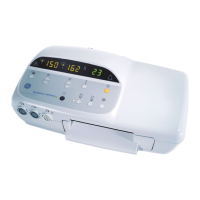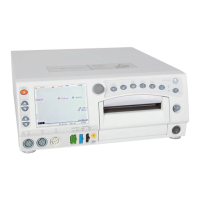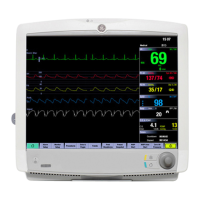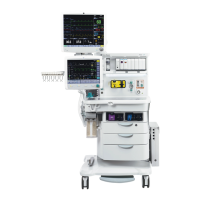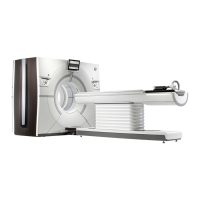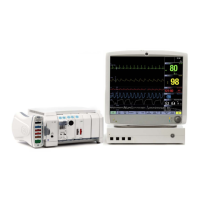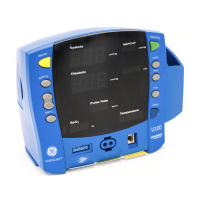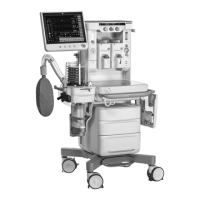6-12 120 Series Maternal/Fetal Monitor Revision B
2015590-001
Functional Checkout Procedure: FECG Test
8. Repeat step 7 for each of the following rates: 30, 60, 210, and 240 BPM.
9. Change the simulator’s
QRS Polarity switch from + to –. Verify that the
monitor does not skip any beats.
10. Set the simulator’s
ECG Rate switch to the RAMP setting. Verify that the
monitor’s FHR1 value counts between approximately 30 and 240 BPM and that
the recorder prints a ramp between the same values. (Refer to Figure 6-4.)
11. Access the Install Options service screen and set ECG Artifact Elimination to
OFF; then exit the service mode.
12. Set the simulator’s
ECG Rate switch to the ∆15 position. Verify the following
on the monitor:
The FHR1 value oscillates by 15 BPM.
The FHR1 heartbeat indicator ( ) flashes for each input signal.
The ECG “beep” is heard from the rear panel speaker.
The recorder prints an oscillation of 15 BPM between 115 and 130 BPM on
the top grid of the strip chart paper. (Refer to Figure 6-5.)
13. Repeat step 12 for rate values of ∆22 and ∆27. The results should be the same
except that the FHR1 value oscillates by either 22 or 27 BPM and the recorder
prints an oscillation of 22 or 27 BPM. The top value is always at approximately
130 BPM. (Refer to Figure 6-5.)
14. Access the monitor’s Install Options service mode screen and set the ECG
Artifact Elimination to ON.
Table 6-2. FECG Test Simulator Settings
Section Switch Setting
FECG/MECG
Main RATE
Rate MANUAL
Mode FECG
QRS Amplitude 15 µV
QRS Polarity +
GENERAL Pattern Memory OFF
UA
Main CMR
Mode TOCO
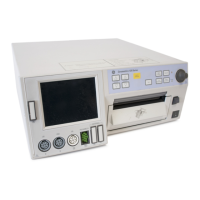
